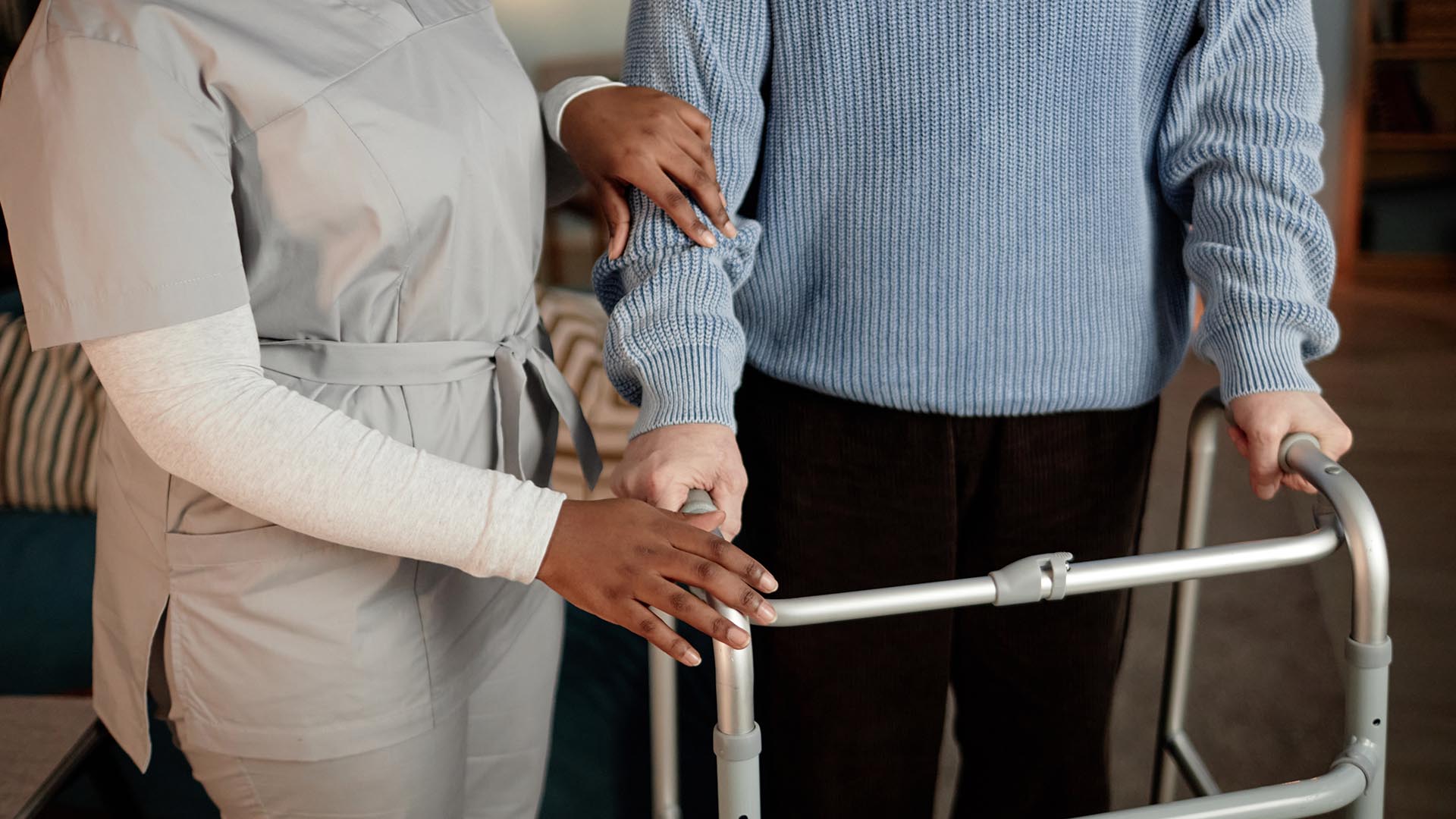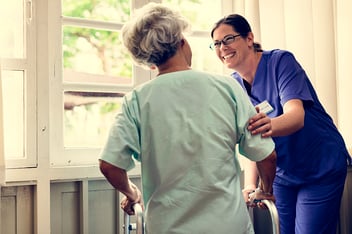Staff Training - How to Equip Your Team for Effective Fall Prevention

Falls are one of the most common and serious risks in nursing homes, leading to injuries, hospitalizations, and even fatalities. According to the Centers for Medicare & Medicaid Services (CMS), approximately 50-75% of nursing home residents experience a fall each year, and many of these incidents could be prevented with proper staff training and proactive interventions.
Effective fall prevention starts with well-trained staff who can identify risks, implement safety measures, and respond appropriately when falls occur. By providing consistent education, hands-on training, and evidence-based best practices, nursing home administrators can create a safer environment for residents and reduce avoidable falls.
Nursing Home Consultants like Qsource play a critical role in improving quality care in nursing homes by offering guidance, training resources, and best practice recommendations to support fall prevention efforts.
Key Areas of Staff Training for Fall Prevention
Understanding Fall Risk Factors
The first step in fall prevention training is ensuring staff can recognize common fall risk factors, including:
- Medical conditions: Residents with Parkinson’s disease, stroke, arthritis, osteoporosis, or cognitive impairments (such as dementia or Alzheimer’s disease) are at higher risk.
- Medication effects: Certain medications (e.g., sedatives, antihypertensives, and diuretics) can cause dizziness, drowsiness, or muscle weakness, increasing fall risk.
- Environmental hazards: Poor lighting, wet floors, cluttered hallways, and improperly placed furniture can contribute to trips and falls.
- Gait and mobility issues: Residents with balance problems or muscle weakness may need assistive devices (e.g., walkers, canes, or wheelchairs) to move safely.
How Qsource Helps: Qsource provides quality improvement initiatives and training programs that help nursing home staff identify risk factors and develop proactive care plans for at-risk residents. Their focus on patient-centered care ensures that interventions are tailored to the specific needs of each resident.
Learn about Our Consulting Services
Hands-On Training for Safe Resident Mobility
Staff members must be properly trained in mobility assistance techniques to prevent falls when helping residents move. Training should include:
- Proper Gait Belt Use: Teaching staff how to safely assist residents in standing, walking, or transferring using a gait belt.
- Safe Transfers: Training on how to properly transfer residents from beds to chairs, wheelchairs to toilets, the appropriate use of mechanical lifts, and other common movements using correct body mechanics to prevent strain or injury to both residents and staff.
- Use of Mobility Aids: Educating staff on how to assist residents in using walkers, canes, or wheelchairs correctly to maintain stability.
Tip: Encourage regular refresher courses and hands-on demonstrations to ensure all staff remain confident in their skills.
Emergency Response Protocols: What to Do After a Fall
Even with the best prevention strategies, falls can still occur. Proper staff training on post-fall protocols is essential to minimize injury and provide appropriate care.
Immediate Actions After a Fall:
- Stay calm and assess the situation: Do not move the resident immediately unless they are in immediate danger.
- Check for injuries: Look for signs of bruising, swelling, or pain, and determine if emergency medical attention is needed.
- Call for help if necessary: Notify the nurse, physician, or emergency services as needed.
- Provide comfort and reassurance Residents may feel anxious or disoriented after a fall, so it’s important to keep them calm and provide emotional support.
- Document the incident: A detailed fall report must be completed, noting the circumstances of the fall, observed injuries, and any corrective actions taken. Documentation should include a clear picture of how the resident was found, which may include their body position in relation to other objects in the room, if the resident had any incontinence, what the resident said they were trying to do, etc. Any information that can point to an effective intervention.
How Qsource Helps: Qsource provides tools and best practices for post-fall assessments, helping facilities implement data-driven solutions to identify root causes and prevent repeat falls.
Documentation and Root Cause Analysis
Thorough documentation and reporting are crucial for fall prevention. Nursing home staff should be trained to:
- Complete detailed incident reports immediately after a fall.
- Perform a root cause analysis to determine why the fall occurred (e.g., environmental hazards, medication side effects, mobility issues).
- Implement corrective measures such as modifying care plans, adjusting medications, or improving environmental safety.
Tracking fall incidents allows administrators to spot patterns and adjust fall prevention protocols accordingly.
Tip: Use electronic health records (EHRs) and fall risk tracking systems to monitor trends and improve care strategies.
Ongoing Education and Fall Prevention Culture
To ensure long-term success, nursing homes must create a culture of fall prevention that involves continuous learning and collaboration.
How to Build a Fall Prevention Culture
- Hold regular staff training sessions: Provide training on orientation, annually, quarterly, and as needed when concerns based on audits arise.
- Encourage team communication: Caregivers, nurses, and administrators should collaborate on fall prevention strategies and share insights.
- Implement fall prevention drills: Just like fire drills, fall prevention drills can help staff stay prepared for real-world incidents.
- Engage residents and families: Educating families about fall risks and how they can support their loved ones leads to better resident outcomes.
How Qsource Helps: Qsource offers comprehensive quality improvement programs that focus on staff training, policy implementation, and continuous monitoring to ensure nursing homes meet CMS quality standards for fall prevention.
The Impact of Well-Trained Staff
Falls are not just accidents—they are often preventable events that can be significantly reduced through effective staff training, proactive assessments, and a commitment to safety.
By investing in comprehensive fall prevention education, nursing homes can:
- Reduce fall-related injuries and hospitalizations
- Improve resident confidence and quality of life
- Enhance compliance with CMS and Qsource quality standards
- Build a stronger, more skilled healthcare workforce
Nursing home administrators and staff play a crucial role in ensuring resident safety. By partnering with nursing home consultants like Qsource, facilities can access expert guidance and resources to continuously improve their fall prevention programs.
Subscribe to the Qsource Blog
Get emailed articles, guides, and updates.



